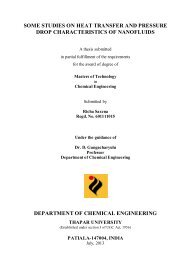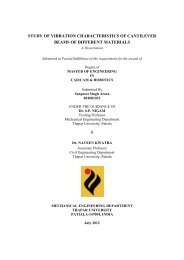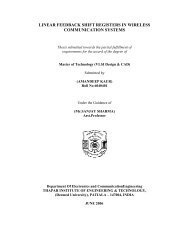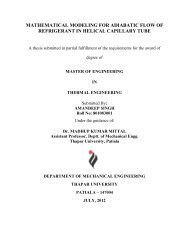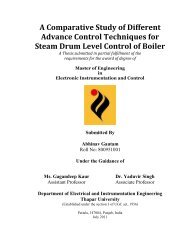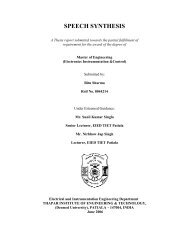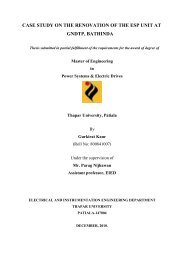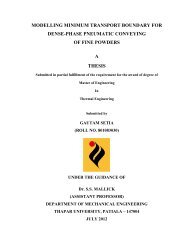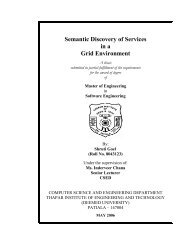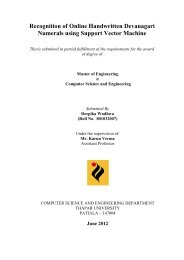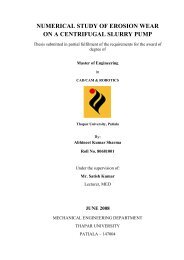from indigenous fermented foods and human gut ... - Thapar University
from indigenous fermented foods and human gut ... - Thapar University
from indigenous fermented foods and human gut ... - Thapar University
Create successful ePaper yourself
Turn your PDF publications into a flip-book with our unique Google optimized e-Paper software.
Chapter II Review of Literature<br />
survived under the acidic conditions <strong>and</strong> bile concentrations normally encountered in<br />
<strong>fermented</strong> products <strong>and</strong> in the gastrointestinal tract, respectively. Therefore, it cannot be<br />
generalized that all probiotic strains are acid <strong>and</strong> bile tolerant. Lankaputhra <strong>and</strong> Shah (1995)<br />
showed that Bifidobacterium longum survives better in acidic conditions <strong>and</strong> is able to<br />
tolerate a bile concentration as high as 4%. Acid <strong>and</strong> bile tolerance is strain dependent, <strong>and</strong><br />
care should be taken to select strains based on these attributes.<br />
2.3.2.3 Adherence of probiotic bacteria<br />
It is not clear if the adhesion to the intestinal epithelium is essential for the persistence<br />
of a probiotic in the <strong>human</strong> intestinal tract. However, adhesion seems to be a property that<br />
enhances long-term survival. The ability of microorganisms to adhere to epithelial cells is to<br />
a large extent species specific, although this may be relative. Screening of organisms for their<br />
ability to survive in the <strong>human</strong> gastrointestinal tract is not difficult. The selection of <strong>human</strong><br />
bacterial isolates will enhance the possibility of finding organisms that will survive. The<br />
isolates can then be tested by administering orally between 10 9 <strong>and</strong> 10 11 viable organism in a<br />
single dose with an appropriate buffering agent <strong>and</strong> the bacterial counts of the specific<br />
organism are then measured in the faeces over a several week period. This technique is most<br />
successful if the natural flora does not contain the organism being tested or only in small<br />
numbers. The first question of transient survival can be established in 48 to 96 h. The<br />
evaluation of the ability of the organism to permanently establish in the gastrointestinal tract,<br />
by proliferation, can be established by continuous appearance in the faeces over several<br />
weeks to several months. The faecal counts should exceed 10 6 /g of faeces. The application of<br />
this screen for selecting probiotics should be encouraged in the future. There are several tests<br />
for determining if a prospective probiotic can bind to intestinal epithelium. Radiolabelling the<br />
microorganisms with an amino acid <strong>and</strong> then counting for adhering radioactivity in either<br />
27



